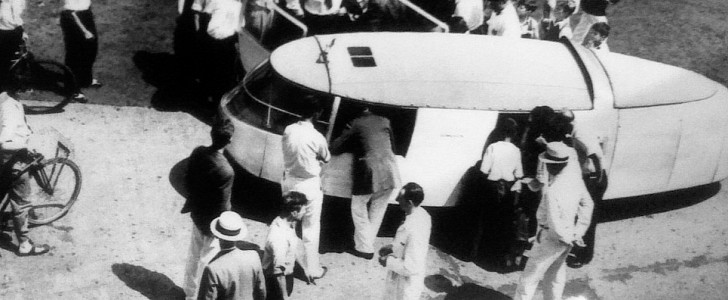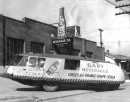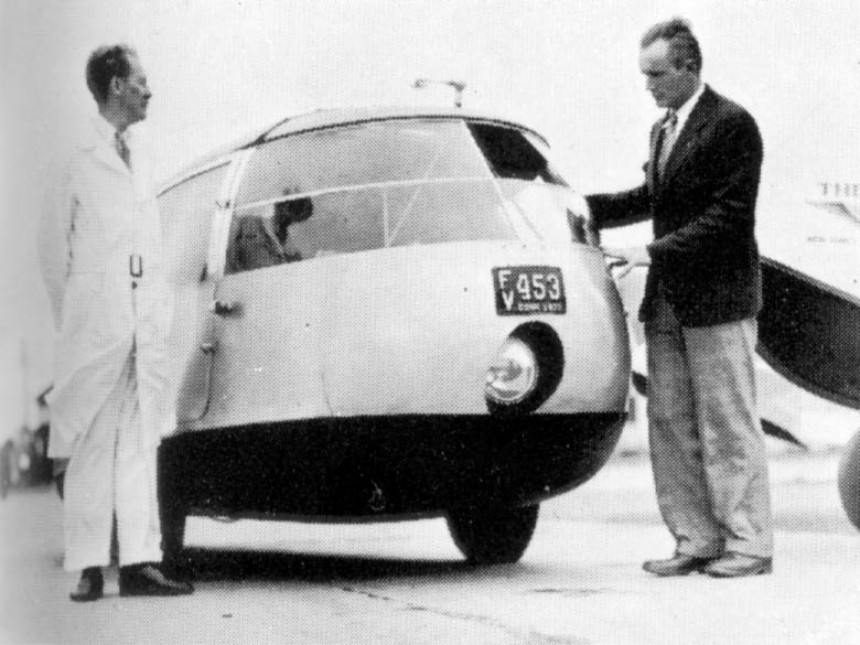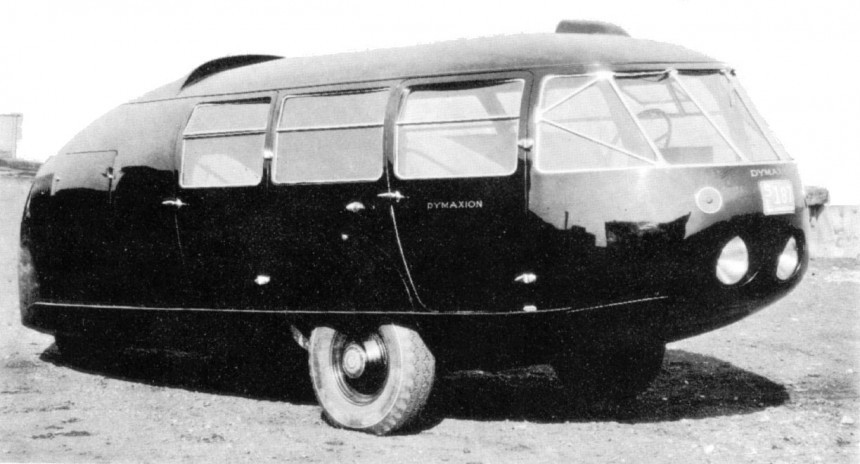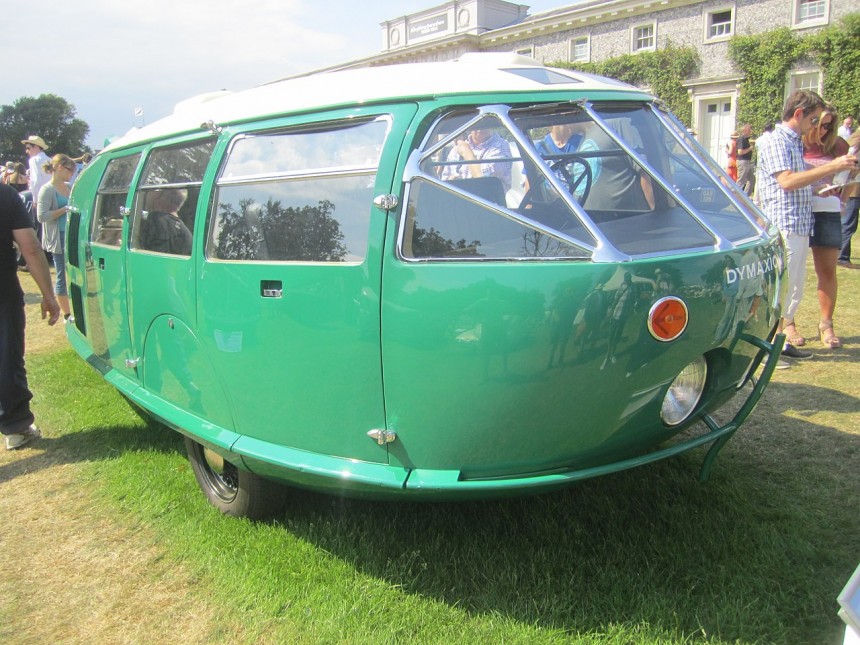One of humanity’s longest-surviving dreams has always been that of conquering land, water and air, preferably at the same time, with just one vehicle. To this day, this dream has never been fully achieved.
It’s not for lack of trying, though. As early as last century, inventors were stressing over the build of this miracle vehicle that would be able to take man both high in the air, back on land and on water. Not one of them came closer to it than American inventor Buckminster Fuller and his Dymaxion car.
Fuller believed that life would be much simpler if all the hurdles around traveling could be removed and, speaking in more general terms, that technology should be used for man’s benefit, to create a vehicle that would function just as well on land, water and in the air. Though definitely a dreamer, he was fully aware of the challenges to such a vehicle, so he chose to approach the problem in steps.
Invoking his idea of 4D Transport or Omni-Medium Transport, he devised something that would later be called the Dymaxion vehicle, which stood for Dynamism, Maximum and Tension. It was a plane fuselage-shaped, front-wheel drive, rear-wheel-steer, rear-mounted engine vehicle that, in theory, would later be used to take off like a regular plane.
Before the concept of private jets even existed, Fuller imagined a car that would function like one. He looked at birds and imagined a vehicle that would be able to travel on the road and then, at a moment’s notice, take flight and return back in traffic when need be. At some later stage, he would have adapted the Dymaxion to float and steer on water as well.
Fuller never wanted the Dymaxion to but just a car, though he anticipated the label from the media, so he had it registered as an automobile. Instead, he thought of it as a “ground-taxiing phase” of a vehicle that would, one day, be retrofitted to fly, land and float.
The first prototype of the Dymaxion was unveiled at Chicago’s 1933-1934 World’s Fair, where, as expected, it got plenty of attention. Here was a 20-foot (6.1-meter) vehicle that could seat 11 passengers, that rode on three wheels and that was able to make 90-degree turns into tight circles because of the rear one. It was also fast and allegedly fuel-efficient, with Fuller himself claiming a 128 mph (206 kph) top speed and a fuel economy of 36 mpg (6.5-liters/100 km).
It was powered by a Ford flathead V8 engine with Ford transmission, and came with a very light, aerodynamic body of aluminum. Naval architect Starling Burgess helped in the design of the vehicle, and naval influences were apparent throughout the interior.
Prototype One was destroyed that same year, during the same event, when another car smashed into it at 70 mph (112 kph), killing the driver. Because Fuller had spoken of the poor stability and steering issues of the vehicle prior to the event, the media ignored the second car involved and ran stories about how it had rolled itself over because it was poorly constructed. A subsequent investigation ruled out any issues with Dymaxion as the cause of the crash.
By this time, Fuller and Burgess had secured a $5,000 donation from a stock broker and they used that money to build Prototype Two and Three. Prototype Two is the only one surviving to this day: you can see it at the Harrah Collection of the National Automobile Museum in Reno, Nevada. Prototype One was badly damaged in the crash but eventually restored by Fuller himself, and was lost in the following years. Prototype Three was scrapped sometime in the ‘50s.
All three vehicles traveled across the U.S. promoting all kinds of stuff, including jet fuel. The third one, for instance, is believed to have been driven some 300,000 miles (482,803 km) before it vanished from the face of the earth.
Because of this, they became hot topics with carmakers of the era, who believed Fuller was onto something in creating his vehicle of the future. Walter Chrysler, Henry Ford and Henry Kaiser were particularly keen to invest in it, even though Fuller had said that the prototype could never be brought into mass production without considerable improvements. The fact that it could not be driven in high winds and its steering issues would not allow it. Still, Chrysler thought that Fuller was onto something so revolutionary that it would render all other automobiles on the road obsolete.
Fuller never went ahead with any of the proposals he got, and decided to dissolve the company he had started in order to be able to make the Dymaxion.
Two replicas of the Dymaxion exist: the Foster Dymaxion Replica, built by architect Sir Norman Foster, is based on Prototype Two, and the Lane Dymaxion Replica, commissioned by Lane Motor Museum in Nashville, Tennessee, following specifications made available to the public. Auto journalists who took the latter for a test drive refuted Fuller’s claims that the real Dymaxion could ever reach speeds of 120 mph (193 kph) when it was nearly tumbling over itself at under 40 mph (64 kph) on at the slightest change of direction.
In other words, Fuller’s Dymaxion was never as revolutionary as he may have expected it to be or his automotive peers assumed that it was. Still, it holds an important place in the automotive industry for daring to think outside the box and for offering a possible solution to one of man’s oldest problems: that of having it all at the same time.
Fuller believed that life would be much simpler if all the hurdles around traveling could be removed and, speaking in more general terms, that technology should be used for man’s benefit, to create a vehicle that would function just as well on land, water and in the air. Though definitely a dreamer, he was fully aware of the challenges to such a vehicle, so he chose to approach the problem in steps.
Invoking his idea of 4D Transport or Omni-Medium Transport, he devised something that would later be called the Dymaxion vehicle, which stood for Dynamism, Maximum and Tension. It was a plane fuselage-shaped, front-wheel drive, rear-wheel-steer, rear-mounted engine vehicle that, in theory, would later be used to take off like a regular plane.
Fuller never wanted the Dymaxion to but just a car, though he anticipated the label from the media, so he had it registered as an automobile. Instead, he thought of it as a “ground-taxiing phase” of a vehicle that would, one day, be retrofitted to fly, land and float.
The first prototype of the Dymaxion was unveiled at Chicago’s 1933-1934 World’s Fair, where, as expected, it got plenty of attention. Here was a 20-foot (6.1-meter) vehicle that could seat 11 passengers, that rode on three wheels and that was able to make 90-degree turns into tight circles because of the rear one. It was also fast and allegedly fuel-efficient, with Fuller himself claiming a 128 mph (206 kph) top speed and a fuel economy of 36 mpg (6.5-liters/100 km).
It was powered by a Ford flathead V8 engine with Ford transmission, and came with a very light, aerodynamic body of aluminum. Naval architect Starling Burgess helped in the design of the vehicle, and naval influences were apparent throughout the interior.
By this time, Fuller and Burgess had secured a $5,000 donation from a stock broker and they used that money to build Prototype Two and Three. Prototype Two is the only one surviving to this day: you can see it at the Harrah Collection of the National Automobile Museum in Reno, Nevada. Prototype One was badly damaged in the crash but eventually restored by Fuller himself, and was lost in the following years. Prototype Three was scrapped sometime in the ‘50s.
All three vehicles traveled across the U.S. promoting all kinds of stuff, including jet fuel. The third one, for instance, is believed to have been driven some 300,000 miles (482,803 km) before it vanished from the face of the earth.
Because of this, they became hot topics with carmakers of the era, who believed Fuller was onto something in creating his vehicle of the future. Walter Chrysler, Henry Ford and Henry Kaiser were particularly keen to invest in it, even though Fuller had said that the prototype could never be brought into mass production without considerable improvements. The fact that it could not be driven in high winds and its steering issues would not allow it. Still, Chrysler thought that Fuller was onto something so revolutionary that it would render all other automobiles on the road obsolete.
Two replicas of the Dymaxion exist: the Foster Dymaxion Replica, built by architect Sir Norman Foster, is based on Prototype Two, and the Lane Dymaxion Replica, commissioned by Lane Motor Museum in Nashville, Tennessee, following specifications made available to the public. Auto journalists who took the latter for a test drive refuted Fuller’s claims that the real Dymaxion could ever reach speeds of 120 mph (193 kph) when it was nearly tumbling over itself at under 40 mph (64 kph) on at the slightest change of direction.
In other words, Fuller’s Dymaxion was never as revolutionary as he may have expected it to be or his automotive peers assumed that it was. Still, it holds an important place in the automotive industry for daring to think outside the box and for offering a possible solution to one of man’s oldest problems: that of having it all at the same time.
